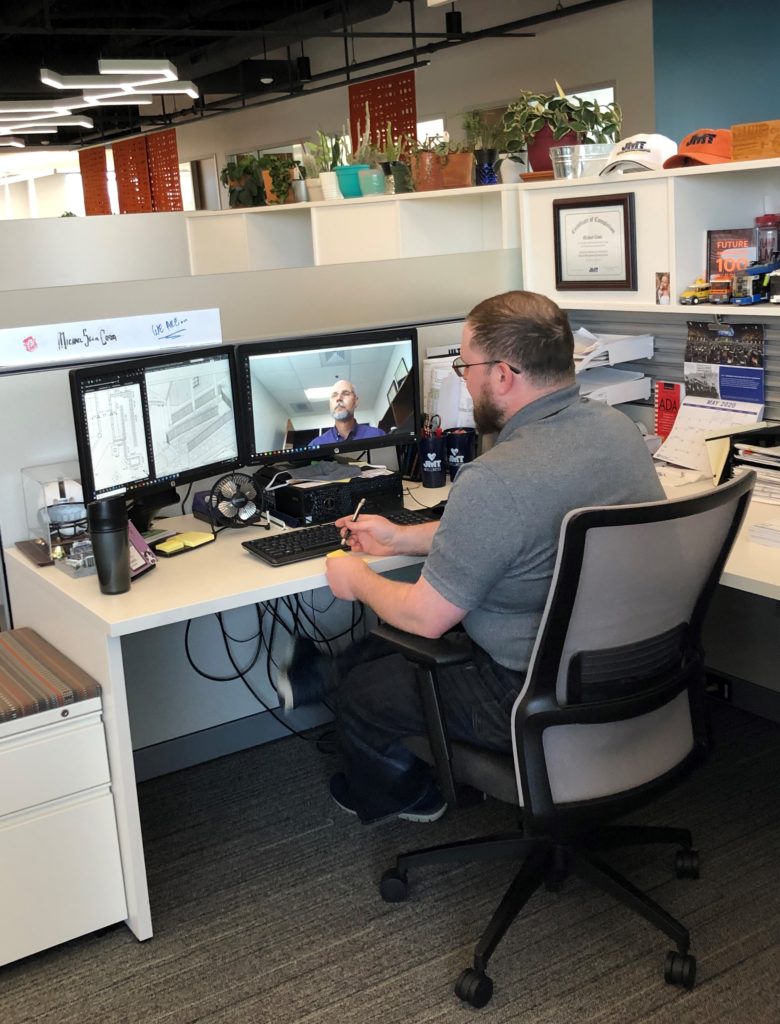June 11, 2020 – The onset of COVID-19 forced companies and its employees to pivot — almost instantaneously — to an all-remote situation with the juggling of work, family and personal responsibilities. Even as shelter-at-home orders begin to loosen, the discovery and successful implementation of new processes to manage workflow seem to have a found place in the future. The following are three examples of how NAIOP member companies navigated change.
Elevating workplace experiences when there is no workplace
The mission of Simpli (formerly Charm City Concierge) is to elevate the workplace experiences for companies and their employees throughout the Baltimore-Washington, D.C. metropolitan region with the execution of curated events, wellness activities, mindfulness and employee engagement initiatives providing every day convenient services to establish work-life balance. But, when the workplace disappears overnight, how does the company stay relevant?

“We immediately reached out to our vendor network to determine how we could maintain a high level of services, while also keeping the safety of employees top-of-mind,” explained Megan Lapple, Director of Sales & Marketing for Simpli.
“As it turned out, the lockdown made our services even more essential, as companies were frantically searching for ways to keep its employees engaged, productive and healthy,” Lapple said. “It was extremely critical to maintain a strong level of positivity and encouragement with every message.”
Even though summer travel plans were most likely cancelled, Simpli developed a “Let us bring the vacation to you” program in which users can “virtually visit” exotic locales such as Whitehaven Beach in Australia.
“Our tenant engagement virtual vacation programming includes Zoom backgrounds mirroring the sandy beaches of Australia, directions for at-home cocktails recipes, packing lists, a summer reading list and directions on the placement of beach chairs, flip-flops and a hat in the living room to transform the space into a tropical oasis,” Lapple said.
The company also increased the level of content for wellness (both physical and mental), cooking and online wellness classes as well as providing information on proper ergonomics, caring for loved ones, home schooling, date nights and survival tips while being quarantined.
“We focused on cultivating a healthy mindset, inspiring others and maintaining gratitude,” Lapple said. “Our activities resonated with our clients and provided them with creative ways to add excitement to isolated and quiet workspaces.”
Impossible to over-communicate especially for “visual animals,” says architect
Don Kemp, Vice President and Architect for JMT Architecture had just returned with colleagues from a site visit in Pennsylvania and was devising his plan for completing the project before learning his workspace was now off-limits for the foreseeable future. “Worse still,” he explained, “my designated staff who accompanied me on the tour were reassigned to a different project and had to be replaced.”

“I hadn’t paid much attention to the Microsoft Teams application that was recently installed on my computer several weeks prior by our IT group, but immediately found it to be our corporate lifeline,” Kemp explained. “It provided management-level executives the means to communicate with production staff, share images interactively, manage workflow and step in when necessary to lend support. Our office went from fully-occupied to a ghost town overnight. Prior to COVID-19, we used a dedicated space to conduct virtual meetings with shared screens and microphones but architects are visual animals and work best when working collaboratively in person. We grinded through the process, kept all projects functioning and relied on continual communication to substitute face-to-face meetings.”
“Working from home was not an entirely new experience but working remotely nearly 100% of the time definitely was,” he added. “As employees manage their specific work-life situation, we have collectively proven the ability to be adaptable and remain productive. Our clients have not experienced meaningful workflow slowdowns and have been extremely understanding during our transition.”
“We’re delivering the design center to you,” explains St. John Properties
Small business owner Tracy Mills was wrapping up the space planning process and readying to pick materials for her new office in the St. John Properties portfolio when the shutdown brought a sudden halt to the entire process. The owner of IT services and solutions company J29 had to specify all the finishes and fixture selections in order for St. John Properties to complete construction build-out activities in time for an early June move-in. Expecting no activity to occur as a result of COVID-19, she retreated to her vacation home in South Carolina.
That is when an email hit her in-box. “Get ready,” instructed Terri Blecman, Senior Interior Designer for St. John Properties, “because we are bringing the design studio directly to you.”
With that, subsequent emails arrived with links displaying up to ten different varieties of tenant finish samples. After Mills narrowed down the selections to a few choices, St. John shipped samples directly to South Carolina to allow personal inspection.
“We typically lay everything out in the design studio and sort through samples in a process that lasts approximately two hours,” Blecman explained. “Working through vendor closures and shipment delays, we were able to select everything remotely in approximately two weeks with the move-in occurring on time. I am confident that the result would have been the same had we met in person.”
“The construction drawings include unique symbols and legends that are typically easily explained in a face-to-face setting, but more complex otherwise. It required us to spend more time educating the client about the process which proved beneficial. Now we know we can successfully perform this function in a virtual setting if necessary,” Blecman said.